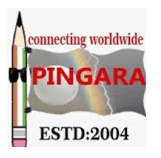Petro Glyphs of Avalakki Pare


The event took place 17-2 2019
Kollur:
Petroglyph of great prehistoric importance is found near Kolluru in the west coast of Karnataka in India.Dr.A Sundara made a great stride in Karnataka. In 1982 Dr. B. vasanth Shetty was reported petroglyphs from Gavali. Prof. T. Murugeshi and his team discovered a major rock art site at Buddhana Jeddu in 2010. Dr. Jamdekar reported a major rock art site at Goa. Very recently, an interesting rock art site reported from Rathnagiri of Maharashtra.
The Indian sub-continent: Is a land of very ancient origin, once a part of the Gondavanaland super continent, which comprised Africa, South America, India, Australia and Antarctica as has been attested by the rock art types and the contained fossil evidences.
Kolluru: Kolluru is a great pilgrimage of India; we discovered a rare Rock art site named “Avalakki Pare” on 17.02.2019. It is about 15-20 acres of grazing plain land in the wild life reserve forest. Here, we noticed 19 rock bruising. Among the engravings, 10 human figures including a baby figure. All figures were shown in a motion of hunting mood. Bull hunting, Boar hunting, Bird hunting and hunting the deer was predominantly shown. One of the bulls is recalling the Harappa one in its execution. All figures are engraved in double-line style. Among the figures of the site, the outstanding figure is a female figure. It was engraved with special interest and care and on the right side of the belly a cup-mark was done; on the left side over the head a rectangular cup-mark was created. This thing is forced to believe us, that the figure must have been a religious significance.

On the west of the site, heaps of microlith deposit is found. The spear heads, arrow heads, scrapers, blades, burins, stone sling balls and other types of microlith like lunates, points and cores were discovered in plenty. Absolutely, there is no domestication and agricultural tools. Majority of tools made out of Dole rite and small flake-tools.
Hunting scenes and associated assemblages found in the site very clearly indicate that the site must have been connected to the hunter and gatherer culture of Mesolithic Period. Large numbers of Mesolithic sites were reported by Dr. K.B. Shivatarak, Dr. L.S.Rao and Dr. P. Rajendran from the coastal region. But, for the first in the west coast of India the petroglyphs of Mesolithic Age found in association with the flake tools from Coastal Karnataka.
Dating of the rock art is much difficult one. Dr. A. Sundara was suggested a time scale for Mesolithic age from 10.000-3000 B.C. Hence, we tentatively consider the same time scale for the rock engravings of Avalakki Pare.
Thanks to Mr. Naresh RFO, wildlife Kolluru, Gangadhar, Siddeshwar, Anand, Janardhan, Sanjeev Shetty, and Murlidhar Hegade for their whole-hearted support and my students Shreyas, Nagaraj and Shamili.
